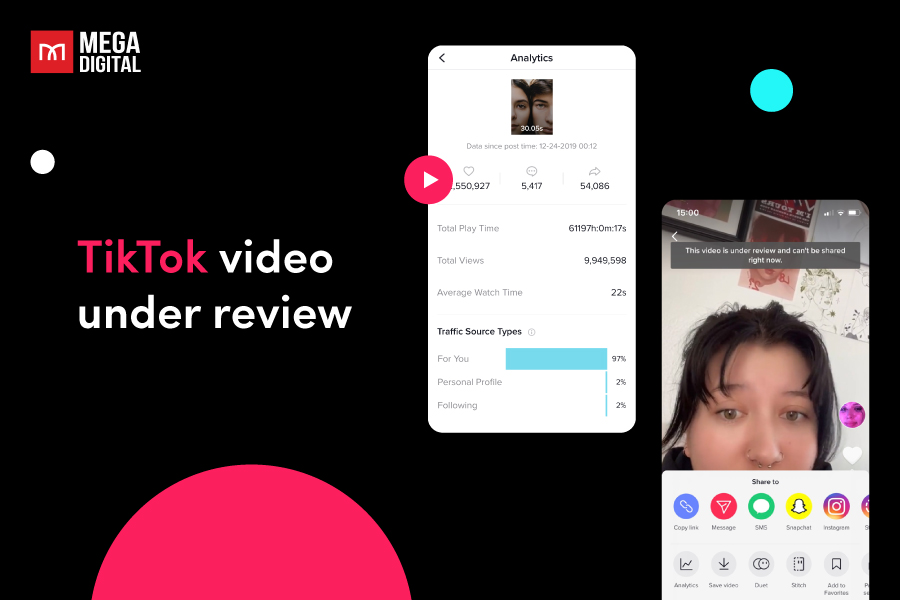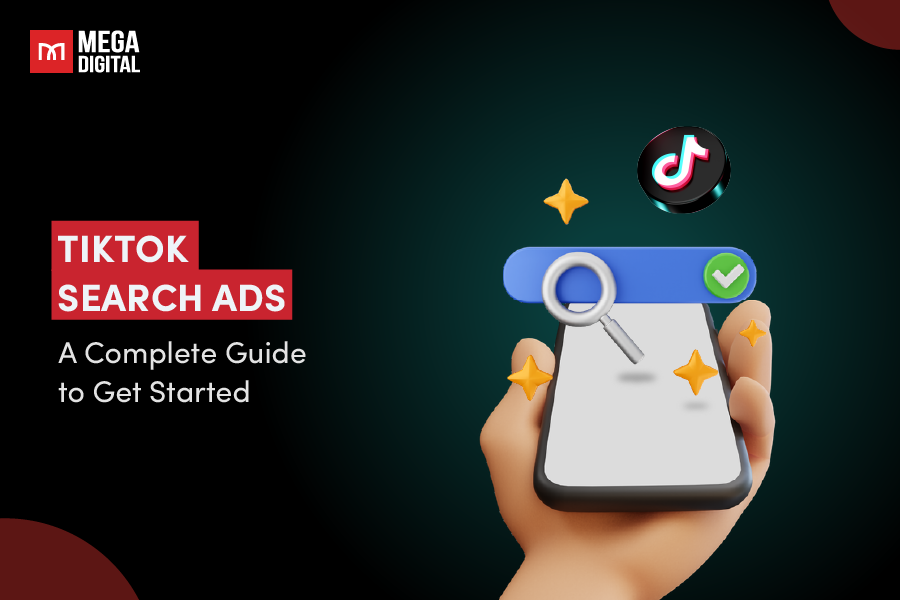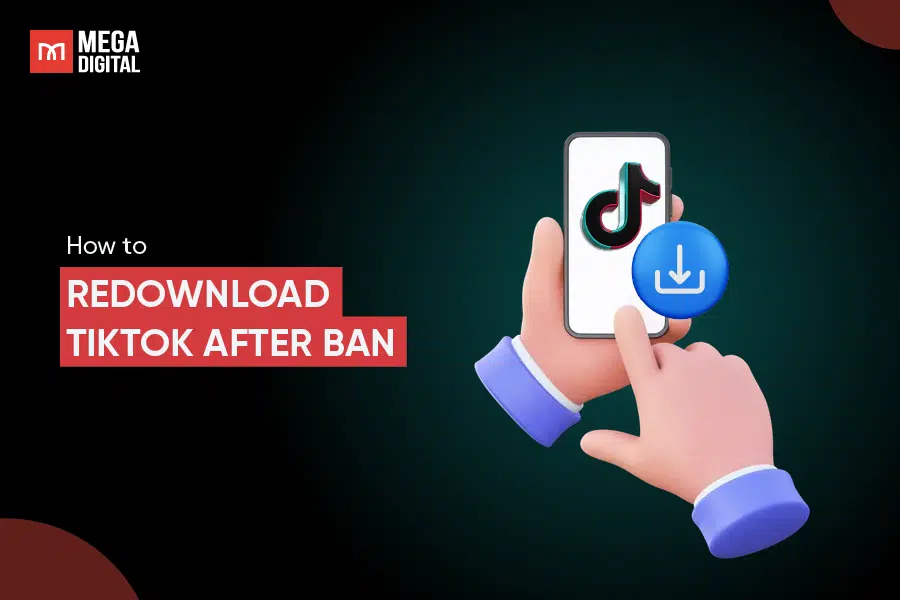In today’s business world, every business owner recognizes the significance of adopting a good lead generation strategy. While there are various approaches to generating leads, one highly effective method is using Google Ads. In this article, I will provide you with a comprehensive understanding of how to use Google Ads lead gen, and how to strategize your campaigns for maximum lead generation.
QUICK SUMMARY
- Google Ads lead generation is about using targeted ads to drive clicks, capture contact info, and turn high-intent searches into qualified leads.
- It works because you can reach the right people at the right time, simplify sign-ups with lead form extensions, and only pay for results.
- Success depends on setting clear goals, choosing the right ad types (Search, Display, YouTube), writing compelling copy, and mapping the lead-to-sale journey.
- Smart Bidding, broad match, and continuous optimization help scale conversions while keeping CPA under control.
- In this guide, you’ll learn proven strategies, optimization tips, and see a real case study (GreenThumb) that doubled leads and boosted sales by 50%.
- What can be understood about Google Ads for Lead Generation?
- Why Use Google Ads for Lead Generation?
- Google Ads Strategy for Lead Generation
- 1. Define your business goals and target audience
- 2. Choose the right campaign objective and campaign type
- 3. Craft compelling ad copy
- 4. Utilize Google Ads lead form extensions
- 5. Map the lead-to-sale journey
- 6. Use Google’s Smart Bidding to leverage this additional data
- 7. Optimize for growth
- 8. Diversify
- Case study – GreenThumb’s Success with Google Ads Lead Gen
What can be understood about Google Ads for Lead Generation?
Google Ads lead generation is a strategy used by businesses to drive sales and generate leads through advertising on Google. This often involves running direct-response campaigns that encourage potential customers to take a specific action, such as buying a product or signing up for a newsletter. These campaigns are also known as traffic-generating or lead-generating campaigns.
The goals of these campaigns typically include encouraging customers to complete a purchase, generating leads by gathering contact details through a sign-up page, and increasing traffic to a website to distribute information.
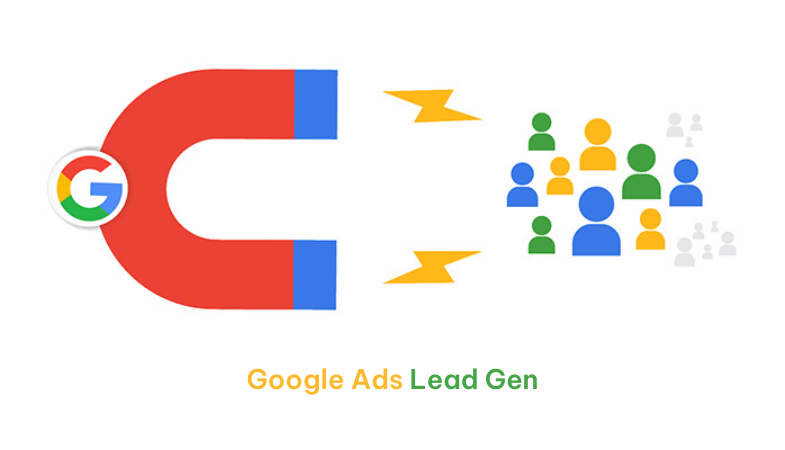
Why Use Google Ads for Lead Generation?
The traditional lead generation method requires users to complete numerous fields on the landing page before sharing their contact details. If your business is still implementing this method, high chance that you are not generating the number of leads you expected. Just put yourself in the user’s shoes, are you willing to spend a lot of time filling out a bunch of fields without knowing when you will hear from the business? This outdated and time-consuming approach not only hinders higher conversion rates but also incurs significant financial expenses. Employing a good form builder is crucial for achieving success with this strategy.
Google Ads is a potent platform for lead generation. It allows businesses to reach potential customers who are actively searching for products or services similar to what they offer, in an automated way. By targeting specific keywords, businesses can ensure their ads appear to the right audience at the right time.

Before diving in, let’s solidify why Google Ads is an excellent choice for your lead generation efforts:
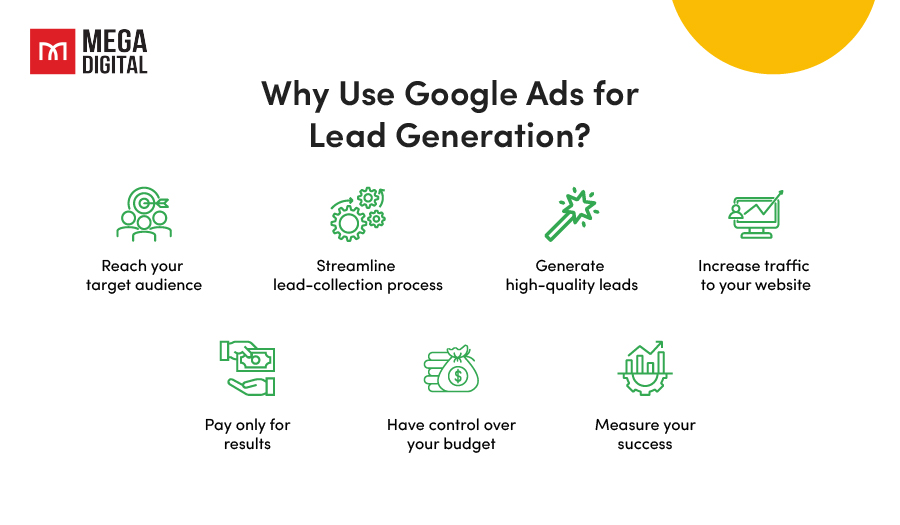
Reach your target audience
Google Ads allows businesses to reach and connect with a broad audience. With over 3.5 billion searches daily, the opportunity for businesses to reach potential customers is endless.
You can target based on keywords, location, demographics, and more. This means your ads are shown to people who are most likely to be interested in your products or services.
Streamline lead-collection process
Google Ads has an extension called lead forms, allowing users to submit their information directly within the ad. When a potential customer clicks on a Google Ad, they can be directed to a landing page with a form. This form can be pre-populated with their Google account information, making it easier for them to submit their details. This not only simplifies the process for the customer but also ensures that the business receives accurate information.
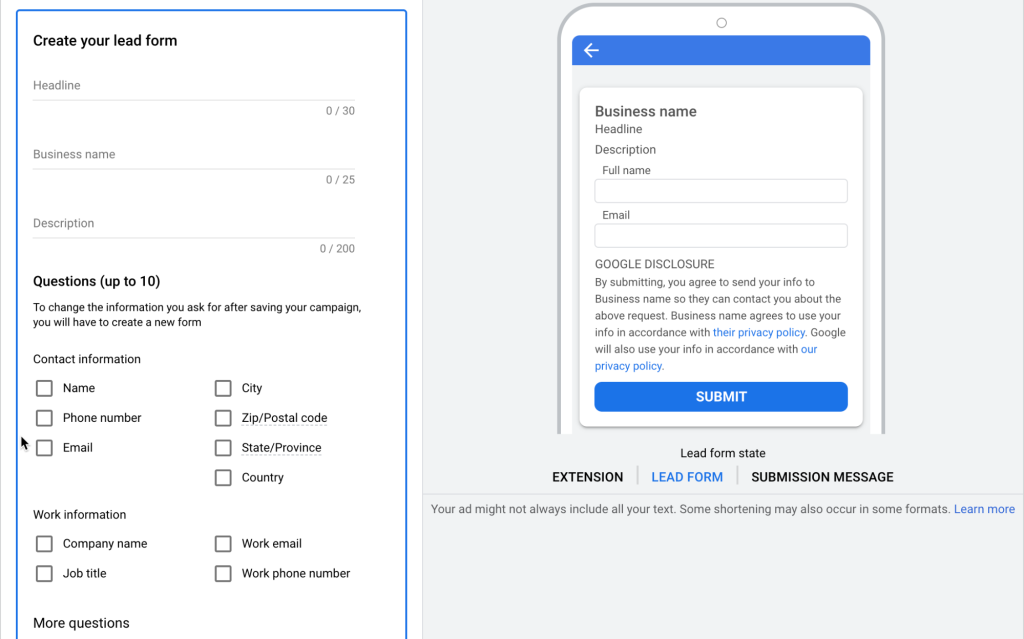
Generate high-quality leads
Because you’re able to target your ads so precisely, the leads you generate from Google Ads are often high quality. These are people who are actively searching for your products or services, which means they’re more likely to convert.
Google Ads can direct potential customers to a sign-up page where they can provide their contact details in exchange for something valuable, such as a free trial, a discount, or a piece of content like a white paper or ebook. This allows businesses to build a database of potential customers who have expressed interest in their products or services.
Increase traffic to your website
Google Ads can significantly increase the visibility of your website in search engine results, driving more traffic to your site. This increased traffic provides more opportunities for businesses to distribute information about their products or services, educate potential customers, and build brand awareness. Additionally, the more visitors a website has, the more data a business can collect about customer behavior, which can be used to optimize marketing strategies and improve the user experience.
Pay only for results
Unlike conventional advertising, Google Ads operates on a pay-per-click (PPC) model. This means you only incur costs when someone clicks on your ad, ensuring your budget is directly tied to driving valuable website traffic. This cost-effective approach makes Google Ads accessible and beneficial for businesses of all sizes, allowing them to target the right audience and maximize their advertising budget.
Have control over your budget
Google Ads provides you with full control over your advertising expenditure. It allows you to establish a daily budget for your campaigns and modify it whenever necessary. This flexibility means you can start with a small budget in the beginning and gradually increase it as you observe positive results.
Measure your success
Google Ads offers detailed analytics so you can see exactly how your ads are performing. You can track all the metrics like the number of clicks, impressions, and conversions your ads are generating. This data can help you refine your campaigns and enhance your return on investment.
Google Ads Strategy for Lead Generation
Now, let’s delve into the key steps for building a lead-generating Google Ads campaign:
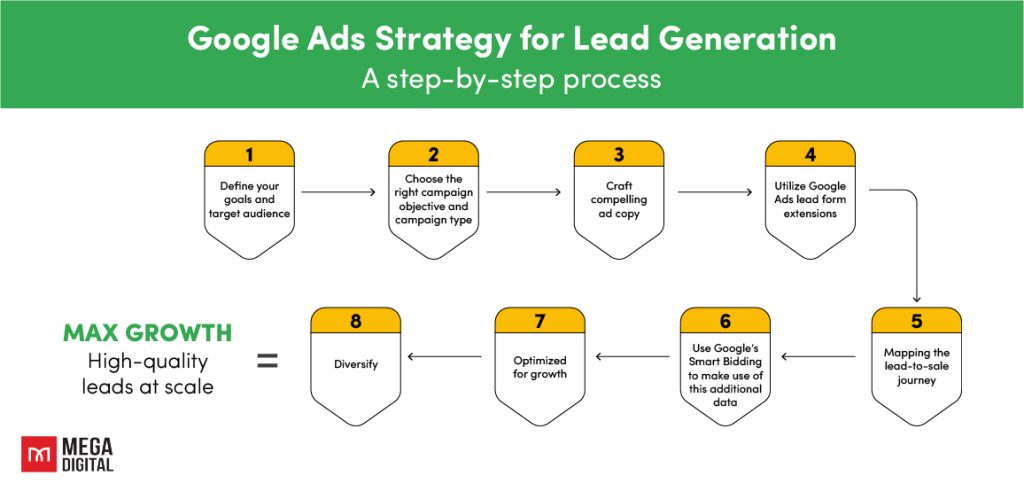
1. Define your business goals and target audience
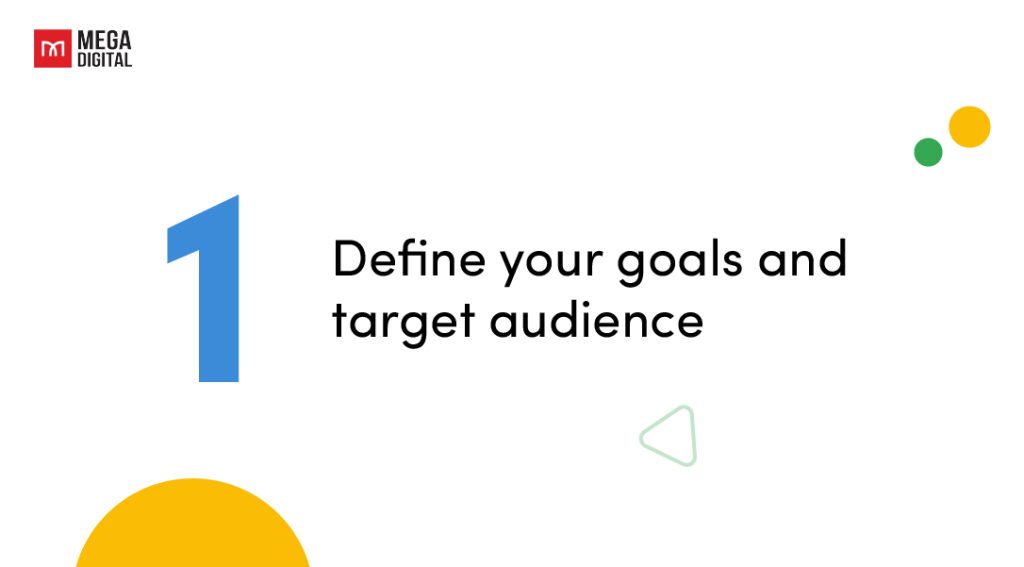
Set clear goals
Before you start creating your ads, it’s important to define what you want to achieve. Are you looking to increase brand awareness, drive traffic to your website, or encourage customers to make a purchase?
Having clear goals will guide your strategy and help you measure the success of your campaign.
As I am focusing in Google ads lead gen in this post, lead generation should be your goal.
Understand your audience
What type of leads are you looking for? B2B decision-makers or consumers ready to purchase? Research their demographics, interests, online behavior, and pain points to craft targeted ad copy and messaging.
2. Choose the right campaign objective and campaign type

Select the option that aligns with your lead generation campaign’s objectives. For instance, if the campaign’s goal is to secure demos, opt for that choice. If you aim to attract traffic towards a lead magnet or a webinar, the traffic option would be ideal. In case of uncertainty, pick one option and put it to the test.
Now comes the challenging part – selecting the ad type. There are multiple ad types, which can get a little overwhelming for those who are new to Google Ads.
Search Ads
Search Ads are best used when you want to reach customers who are actively searching for products or services similar to yours. They are ideal for driving immediate conversions and sales. For example, if you’re a local business that provides plumbing services, you might use Search Ads to reach people who are searching for “plumbers near me”.
Display Ads
Display Ads are typically used for building brand awareness and reaching customers who may not be actively searching for your products or services. They can also be used for retargeting, which involves showing ads to people who have previously interacted with your business. For instance, if you’re launching a new product line, you might use Display Ads to increase its visibility among potential customers.
YouTube Ads
YouTube Ads are great for storytelling and engaging customers in a more interactive way. They can be used to showcase your brand’s personality, and explain complex products or services. For example, if you’re a tech company launching a new piece of software, you might use a Video Ad to demonstrate its features and benefits.
3. Craft compelling ad copy

Conduct keyword research
Identify the keywords potential customers are using when searching for your products or services. For lead generation, focus on keywords that indicate a strong intent to purchase or learn more about your offerings.
Focus on benefits
Highlight how your products or services solve your target audience’s problems.
Use strong calls to action
Tell users what you want them to do, whether it’s visiting your website, downloading a guide, or submitting a lead form.
A/B test different variations
Experiment with different headlines, descriptions, and images to see what resonates best with your audience.
4. Utilize Google Ads lead form extensions
Google Ads form extensions are essentially interactive forms that appear with your ad, allowing potential customers to provide their contact information directly through the ad. This form can be customized to capture the specific information you need, such as name, email address, phone number, etc. The user’s basic contact details are often pre-filled, making it easier for them to submit the form. This not only enhances the user experience but also increases the likelihood of lead conversion. high-quality leads at scale.
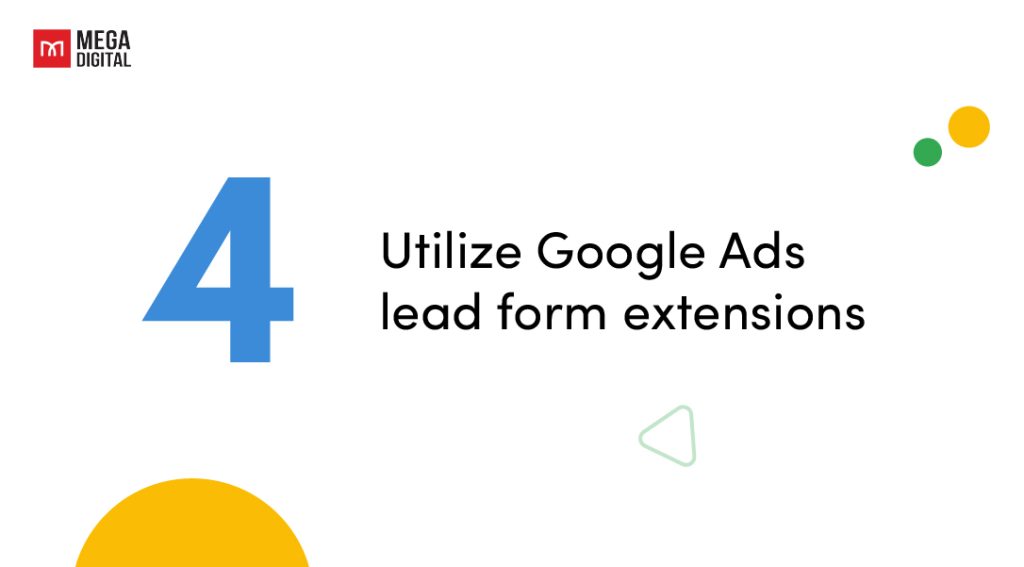
5. Map the lead-to-sale journey
This process involves tracking a potential customer’s interactions with your business from the initial point of contact (the lead) to the final point of sale. It provides valuable insights into customer behavior and preferences, enabling businesses to tailor their marketing strategies accordingly. Moreover, it helps businesses measure the return on investment (ROI) of their marketing efforts, as they can directly link sales to specific ads or campaigns.
Act as if you were a potential customer and map both the online and offline touchpoints leading up to the revenue stage.
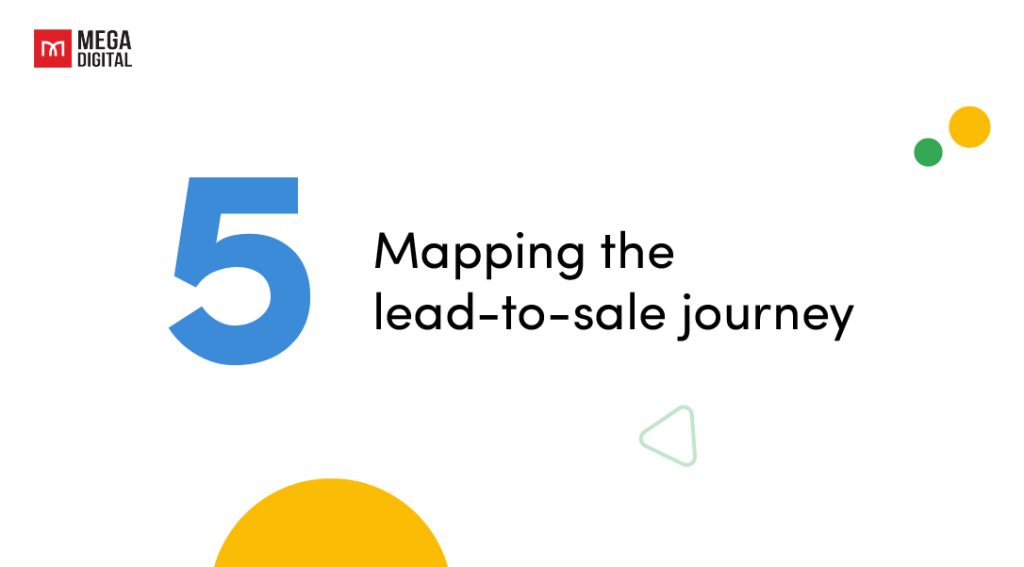
Remember to consider the following:
- Set up tracking mechanisms (Google Ads’ conversion tracking and Google Analytics) at each stage of the customer journey and constantly check if it is working or not.
- Calculate the average duration between each step to determine if it’s viable to optimize this as a conversion action.
- Track metrics like click-through rates (CTR), conversion rates, and sales to understand how customers are moving through the journey.
6. Use Google’s Smart Bidding to leverage this additional data
Smart Bidding is of great importance for every business in optimizing bids for conversions in each auction.
Business can choose from different strategies based on their goals, such as target CPA (cost per acquisition), target ROAS (return on ad spend), maximize conversions, or maximize conversion value.
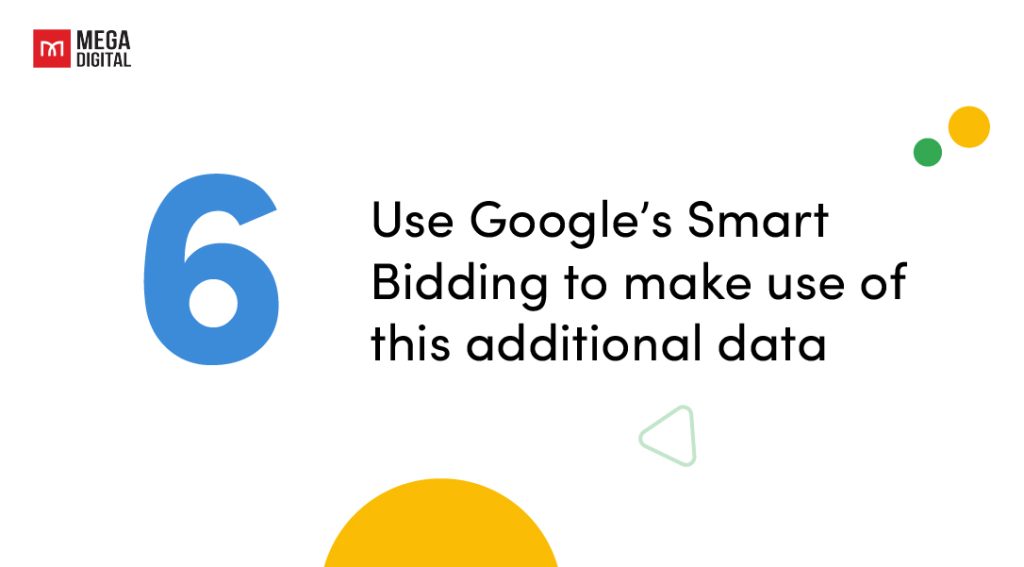
Understanding how to effectively utilize bid strategies is crucial for maximizing their benefits. Here are some key considerations:
- Conversion volume: The Target ROAS currently has a threshold of 15 conversions at the account level. Based on experience, this might be insufficient. It’s advisable to use the Maximize Conversion Value strategy until you reach 50 conversions.
- Testing: If your campaign has sufficient volume, consider testing how value bidding compares to conversion-based bidding using Campaign Experiments.
- Initial volatility: Transitioning to a new bid strategy or conversion action can cause some initial volatility. The goal is to minimize this to the lowest level possible. Understanding how Smart Bidding utilizes data is crucial in this phase. You’ll likely need to make some adjustments in the short term.
- Learning period: Be prepared for a learning period where performance may initially appear somewhat weaker then you expected. This is a normal part of the process when adopting new bidding strategies.
7. Optimize for growth
Once you start getting more qualified leads, the next step in your Google Ads lead gen strategy is to optimize your campaigns to acquire more leads. This involves scaling your successful campaigns and refining your strategies to maximize results.

Here, I recommend you switch the keyword match type of your campaign to Broad match. Combined with Smart Bidding, you become eligible for a larger number of queries, while only participating in auctions that have a high likelihood of conversion.
On average, you can expect to see a 25% increase in conversion volume for the same Cost Per Acquisition/Return On Ad Spend.
Here are some key considerations:
- Do not use for brand campaigns: While technically, Broad Match could be used for brand campaigns, it’s not recommended. You’re likely to receive non-brand clicks through your brand campaign.
- Transparency: Despite Google limiting the queries visible in the Search Terms report, don’t let this deter you from testing Broad Match. Negative keywords remain important, but it’s crucial to ensure we ask Google to optimize towards the correct conversion actions.
- Creative relevance is crucial: With eligibility for a much broader range of queries, regular optimization of your Responsive search ads (RSAs) will ensure the Quality Score for each query is as high as possible.
- Leave no stone unturned: Pair broad match with Performance Max and dynamic search ad groups for maximum coverage.
8. Diversify
Finally, it’s important to diversify your Google Ads lead gen strategy, as it allows you to reach different segments of your target audience, test different strategies, and reduce the risk associated with relying on a single platform or strategy.

Businesses should consider the following actions:
- Experiment with different ad types: Google Ads offers a variety of ad types. Experimenting with different ad types can help you reach your audience in different ways and identify which types are most effective for your business.
- Test different strategies: Don’t be afraid to try new strategies or techniques, from bidding strategies to targeting options. Regular testing and optimization are key to improving your campaigns and discovering what works best for your business.
Case study – GreenThumb’s Success with Google Ads Lead Gen
Company background
GreenThumb is a company specializing in eco-friendly gardening products. Despite having a unique and high-quality product range, they were struggling to reach their target audience and generate leads.
Challenge
GreenThumb’s main challenge was to effectively reach their target audience – environmentally conscious gardeners – and convert them into leads. They had tried various marketing strategies, but the results were not as expected. They needed a solution that would increase their visibility among their target audience and generate high-quality leads.
Solution
GreenThumb decided to leverage Google Ads for lead generation. They started by defining their campaign goals, which included increasing website traffic, generating leads, and boosting sales. They identified their target audience and selected relevant keywords for their ads.
GreenThumb created compelling ad copy and designed effective landing pages for each of their eco-friendly products. They also set up conversion tracking to measure the success of their campaigns.
To optimize their bids and get the most out of their ad spend, GreenThumb used Google’s Smart Bidding. They also diversified their ad types, using a mix of Search Ads, Display Ads, and Video Ads to reach potential customers at different stages of the buyer’s journey.
Results
After implementing their Google Ads lead gen strategy, GreenThumb saw a significant increase in both the quantity and quality of their leads. Their website traffic increased by 70%, and the number of leads generated through their Google Ads campaigns doubled. Most importantly, they saw a 50% increase in sales, proving that the leads they were attracting were high-quality and likely to convert.
Wrap-up
Google Ads is a powerful tool for businesses to generate lead. By understanding how to use Google Ads lead gen and implementing a solid strategy, businesses can accumulate high-quality leads and ultimately increase their bottom line. Remember, the key to success with Google Ads lies in understanding your audience, creating compelling ads, and continually optimizing your campaigns.







